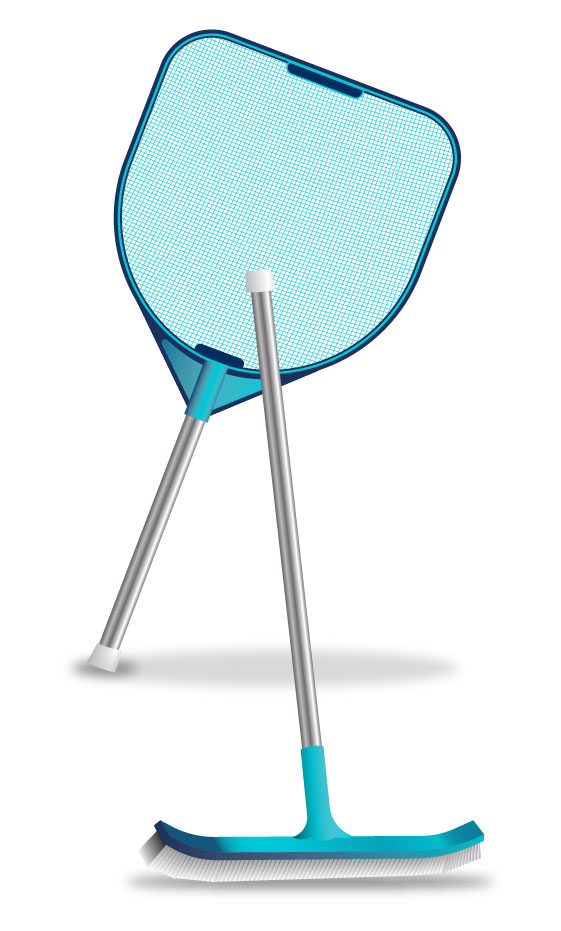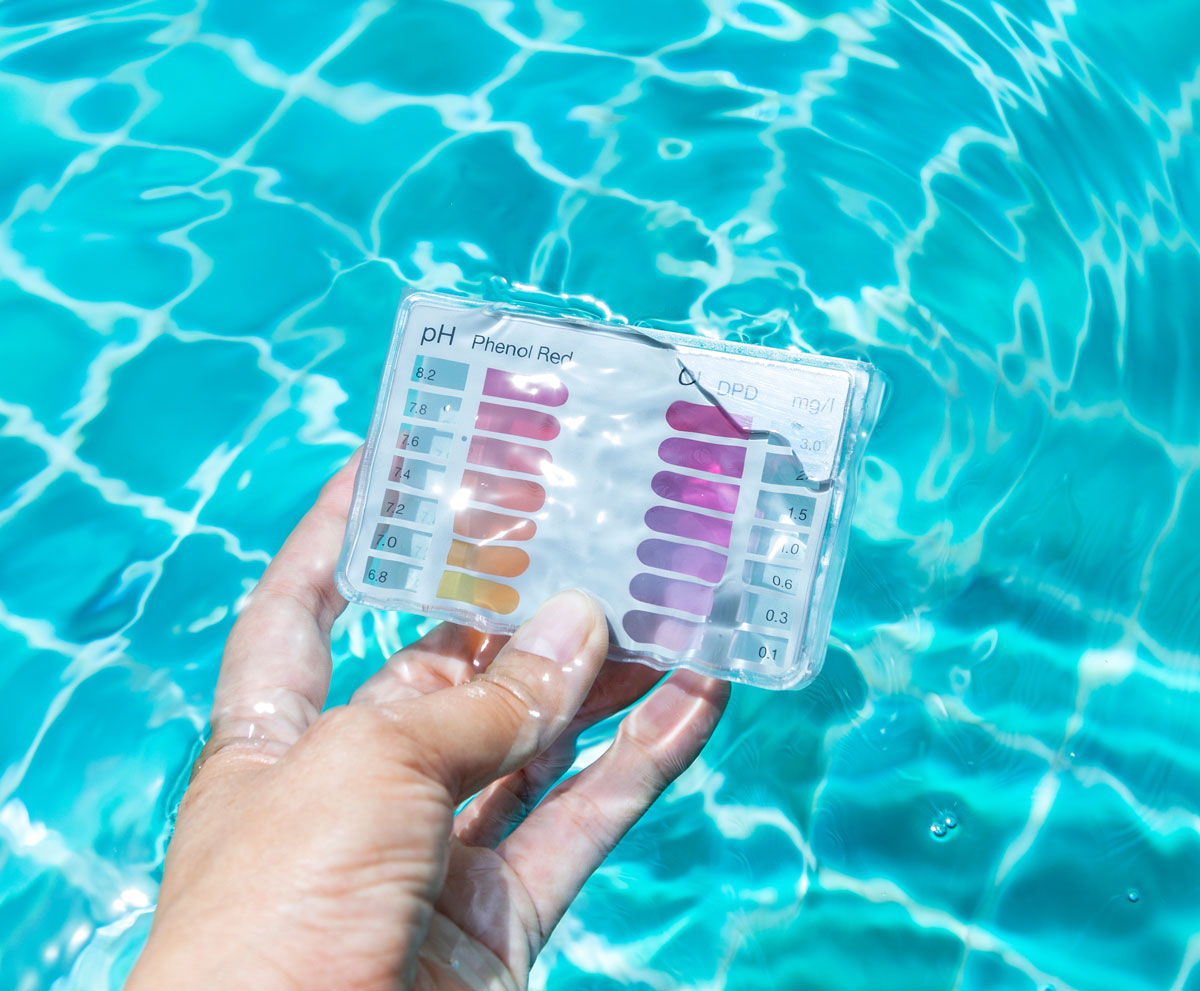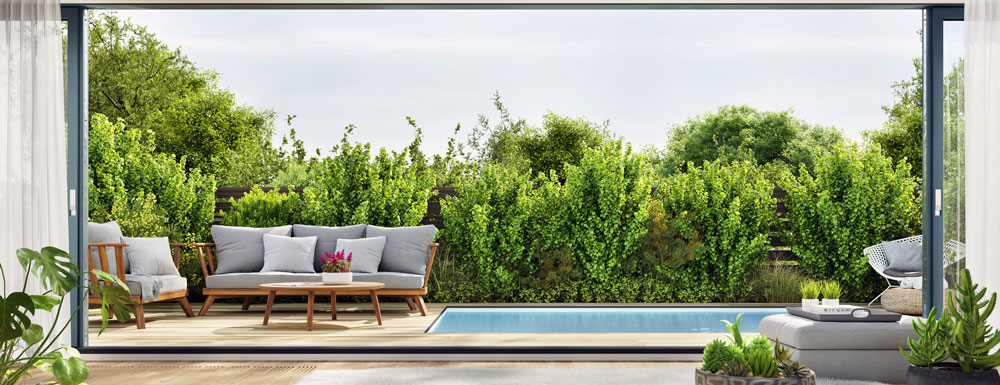Spring Into Pool Season
Tips for opening your pool in spring.
Opening your pool is an essential step to being ready for the first pool weather of the season. Here are some helpful tips to help you open your pool. It is recommended that you open your pool about a week before you plan to start swimming, and ideally once the daytime temperatures are consistently 70°F or 21°C.
If you have any questions, it is always advised that you contact your pool care professional for help, and with any equipment please read and follow the care & maintenance guidelines provided by the manufacturer.
Organize Your Tools
Before starting any project it’s always a good idea to organize and clean your tools. Inspect your tools to make sure they are in good working order and undertake any necessary maintenance. Then make a checklist of any additional supplies that you need.
Clean and Remove the Pool Cover
Clear away any debris that may have accumulated over the winter months. If your pool cover is dry, you can use a leaf blower to blow away the debris, starting from one side and blowing it across. Then use a broom to clean up around the edges. If your cover is wet, use a normal garden hose with a spray attachment to push away the debris. With the cover cleared of debris use a cover pump to suck up the remaining puddles of water. Once your cover is dry it’s time to remove it and inspect your pool.


The natural quartz granite surfaces of the Antigua design from Poolside by CGT. Design: Antigua
Inspect Your Pool
With the cover cleaned and put away, it’s a good idea to perform a visual inspection of your pool and the pool liner. Check around your pool for cracks or evidence of leaks. Look to see if there are any small rips in the liner that need to be patched. Inspect and clean your pool pump, skimmer basket, drains, plugs and connections. Make sure the equipment is cleared of any debris, and repair or replace any worn parts as needed. Reconnect any equipment that you may have disconnected when you closed the pool at the end of last season. If your pool has lighting, now is the time to reattach your lights and test to make sure they are still shining and bright.
Safety Tip
Don’t forget to inspect your fence, gates, and latches around your pool. Make sure all handrails are steady and check that latches are secure.
Clean the Water
Gently remove all debris from the water using a skimmer net and a pool brush, being careful not to scrape your pool liner. Once the water is clear of debris top up the water until the waterline reaches halfway up the skimmer opening. Now it’s time turn on your pump and circulate the water. It’s recommended to allow the pool’s water to circulate for at least 12 hours before testing the water chemistry. In some cases, it is recommended to circulate the water for up to 24 hours.
Safety Tip
Don’t forget to inspect your fence, gates, and latches around your pool. Make sure all handrails are steady and check that latches are secure.

Plastic Furniture Cleaning Tip
Removed mold and mildew from white plastic furniture with a gentile brush and a mixture of one part bleach to four parts water, and for coloured plastic furniture use one part white vinegar to four parts water.
Water Chemistry
Once the pool’s water has been allowed to circulate for the recommended amount of time you may test your water chemistry. Poolside by CGT recommends a pH level of 7.2 to 7.6 to maintain human comfort and help the chlorine properly clean your pool. Chorine needs a balanced pH level to effectively kill bacteria and algae. Check the alkalinity reading. Alkalinity levels affect your pool water’s ability to counteract changes in the pH level. Poolside by CGT recommends a total alkalinity level of 80-120 ppm. Calcium levels should be kept at a minimum level of 200 ppm. When adding chemicals, it is very important to allow each chemical to circulate through the pool before adding a second chemical. Certain combinations of chemicals at a high concentration can cause bleaching of the liner. For more information on the recommended water chemistry download the Poolside by CGT Pool Care Manual.
Around the Pool
To keep your whole backyard looking its best, don’t forget to care for your lawn and gardens as well. Clear up any fallen twigs and branches from your lawn, then rake up dead leaves and add them to your compost pile. Overseed and water any bare patches in the grass around April to Mid-May, and while the ground is still soft, edge around your garden beds with a sharp edging tool or garden spade. Add fertilizer or plant feed to your plants and shrubs to promote the health and growth of your garden. Once the ground has warmed apply fresh mulch in the colour of your choice to garden beds and around trees to help prevent weed growth. Inspect wood decks for any required sanding and re-staining. Check your exterior lighting and replace burnt-out bulbs. Then set up your patio furniture and clean out your barbecue, grill, or smoker.
Plastic Furniture Cleaning Tip
Removed mold and mildew from white plastic furniture with a gentile brush and a mixture of one part bleach to four parts water, and for coloured plastic furniture use one part white vinegar to four parts water.
Time to Enjoy Your Pool
Now after all your hard work, it’s time to relax and enjoy your beautiful pool with family and friends. Remember to keep a regular maintenance schedule through the pool season to ensure the beauty and longevity of your pool for years to come.
Gather. Relax. Live. Poolside by CGT

Read More Articles
No Results Found
The page you requested could not be found. Try refining your search, or use the navigation above to locate the post.